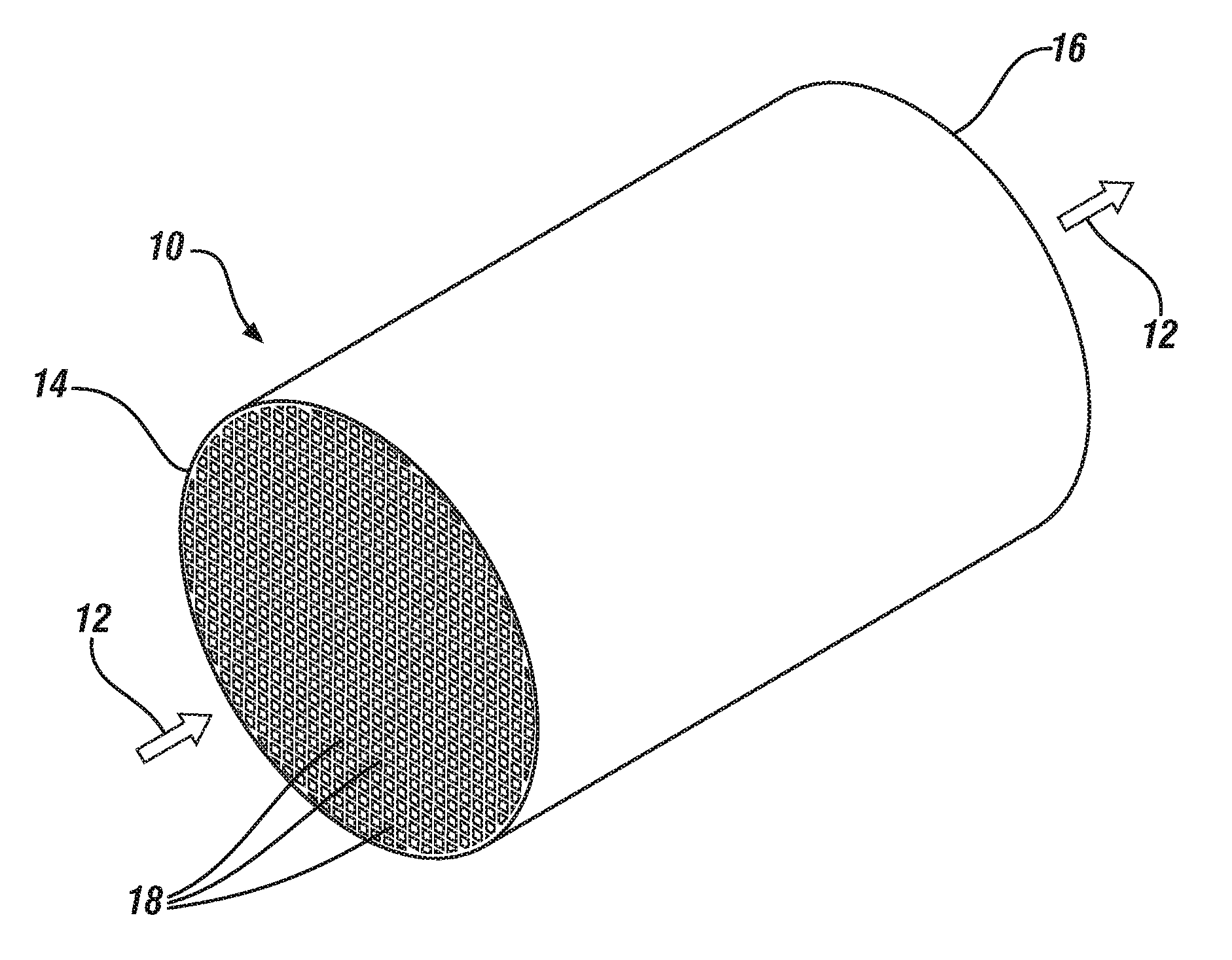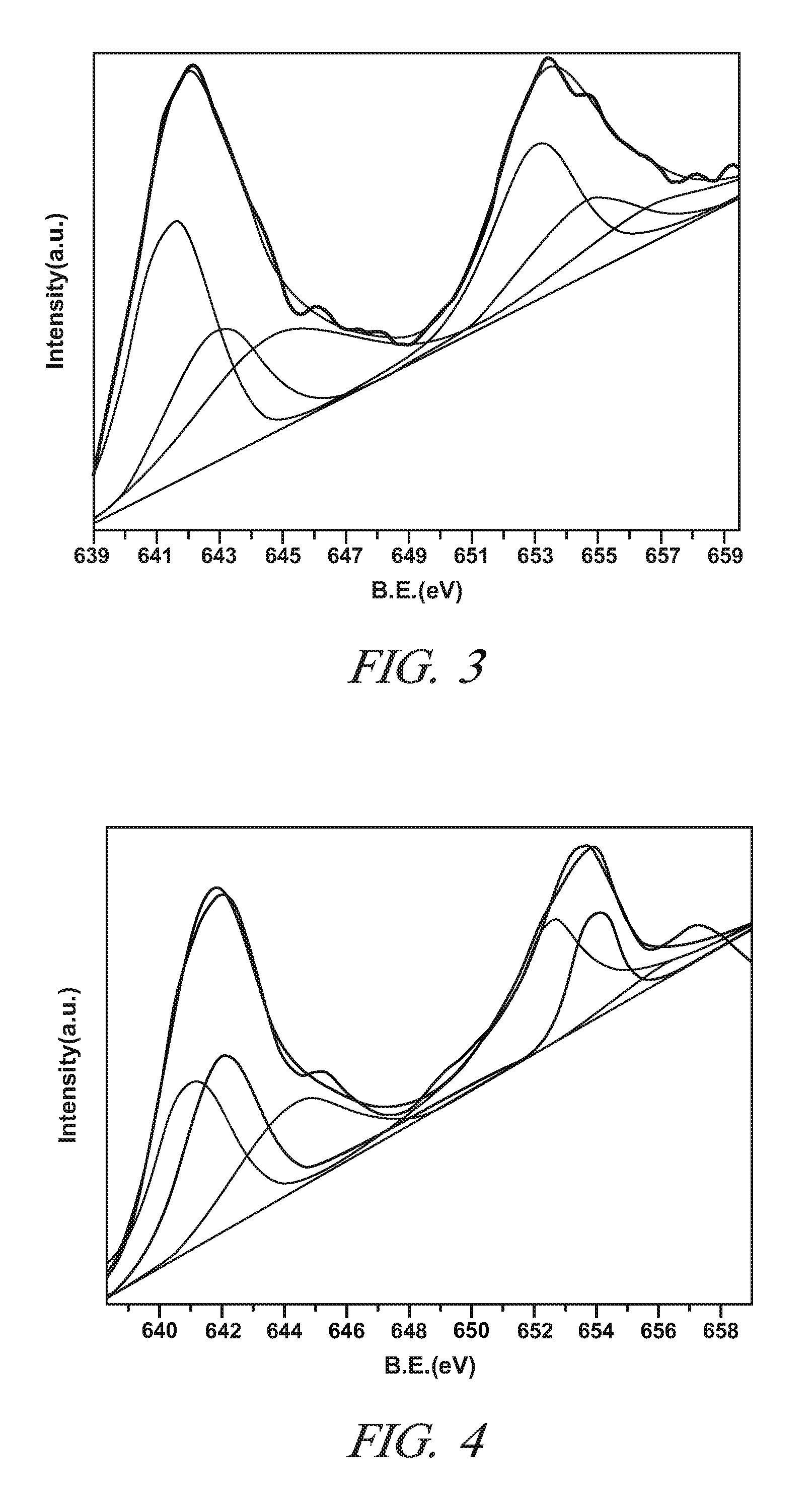Non-stoichiometric perovskite oxide oxidation catalyst for oxidizing no to no2
- Summary
- Abstract
- Description
- Claims
- Application Information
AI Technical Summary
Benefits of technology
Problems solved by technology
Method used
Image
Examples
example
[0046]This Example demonstrates the properties and the NO to NO2 catalytic oxidative activity of LaXMnOY perovskite oxide particles in which the lanthanum and manganese metal cations are present in a non-stoichiometric molar ratio (“X”) of 0.85 to 0.95. The value of Y in this Example is sometimes replaced by the symbol “3+δ” with “δ” ranging from 0 to 0.30. This designation is merely an alternative expression for Y that focuses on variations in the unit cell oxygen content at the tenths and hundredth decimal locations. The subscript “Y” and “3+δ” represent the same numerical range of 3.0 to 3.30 for all intents and purposes. The value of “δ” is sometimes referred to as the over stoichiometric coefficient.
[0047]Five samples of single phase LaXMnOY perovskite oxide particles with different molar ratios of La to Mn were prepared (X=0.9, 0.95, 1.0, 1.05, and 1.11) by the citric acid method using metal nitrates of Lanthanum and manganese. For each sample, the appropriate amounts of La(NO...
PUM
| Property | Measurement | Unit |
|---|---|---|
| Length | aaaaa | aaaaa |
| Mass | aaaaa | aaaaa |
| Mass | aaaaa | aaaaa |
Abstract
Description
Claims
Application Information
 Login to View More
Login to View More - R&D
- Intellectual Property
- Life Sciences
- Materials
- Tech Scout
- Unparalleled Data Quality
- Higher Quality Content
- 60% Fewer Hallucinations
Browse by: Latest US Patents, China's latest patents, Technical Efficacy Thesaurus, Application Domain, Technology Topic, Popular Technical Reports.
© 2025 PatSnap. All rights reserved.Legal|Privacy policy|Modern Slavery Act Transparency Statement|Sitemap|About US| Contact US: help@patsnap.com



